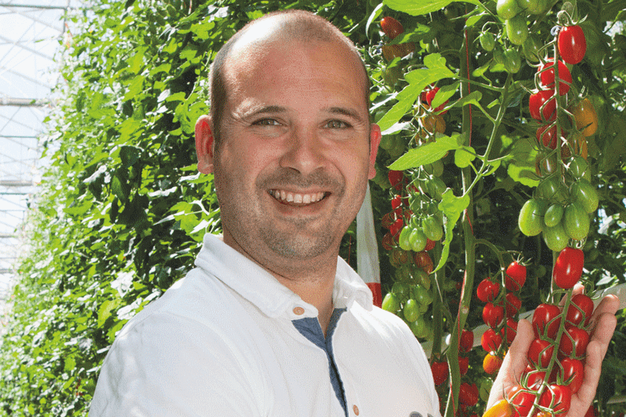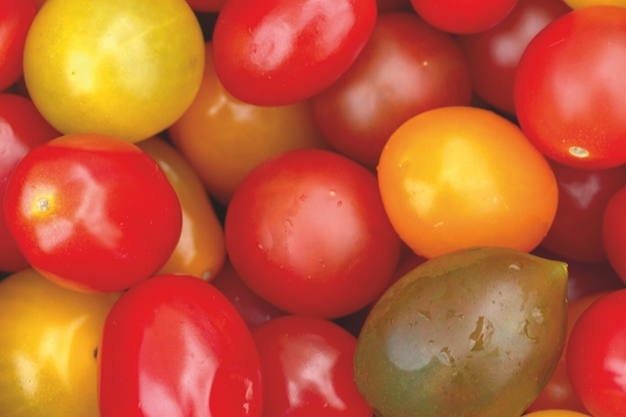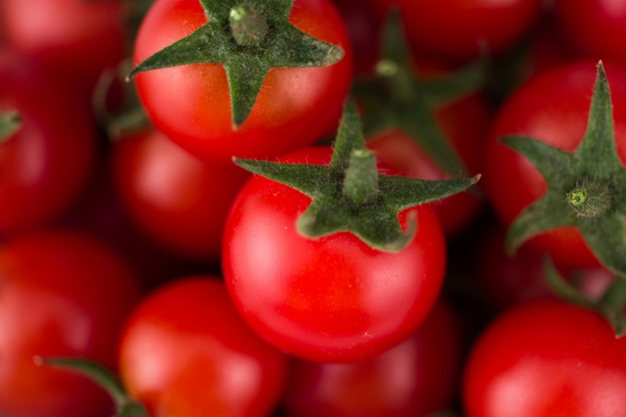Martijn van Stee (Crop Breeding Manager) and Senior Breeder Gianplacido di Rosa of Enza Zaden Italy (Sicily) worked together with Marketing & Sales and the Technology Department to compose an extensive list of requirements and wishes and to start this long-term project. And they immediately set the bar high with a requirement for shapes and colors that didn't yet exist. "Nobody wants to buy more of the same," explains Van Stee, "you need to make yourself distinct." Taste is important as well as shape and color, and the varieties needed to be productive from early to late in the season, be easy to work with, and not susceptible to diseases.
Sweet shop in Sicily
The most beautiful breeding parents were selected from the Di Rosa 'sweet shop'. "We used good red varieties as a starting point, crossed the parents of these varieties with yellow varieties, and back-crossed the offspring repeatedly to form lines with stable characteristics," he explains. "These were then sent to Enkhuizen in the form of leaf samples, to be screened in the lab for the desired characteristics." Things moved quickly after that.
 Martijn van Stee
Martijn van Stee
Combining traditional breeding techniques with marker technology
"In a traditional breeding process, you primarily evaluate the phenotype and you need to wait after each breeding round until the plant has developed sufficiently to bear fruit," states Van Stee. "DNA analysis and marker technology have accelerated this process significantly. Using gene markers, we were able to determine even for very young plants whether they would have the desired color and resistances and whether they would be susceptible to tip rot or growth tears during fruit ripening. Ultimately, you also have to evaluate the fruit and a new variety needs to prove its worth under practical conditions in the field compared to its competition. By combining traditional breeding techniques in Sicily with the laboratories in Enkhuizen, the time required for the first part of this process was shortened by at least 1.5 years."

Tomato without name
Three years after the start of the specialty project, 2 varieties were already ready for the ultimate field trial: a yellow and an orange mini-plum tomato. The selections were tested in Spain, the United States, Canada, and – on a small scale – in the Netherlands. "They passed this test with flying colors," according to Van Stee. "They had the same crop type and the same resistances as the commercial red varieties but distinguished themselves positively on color and flavor. Both varieties are perfect for unheated cultivation and were recently planted on a reasonable scale by several growers in Spain. I have never seen a faster success story for tomatoes before. We have not even thought of variety names yet."

More tomato varieties to come
And, if it were up to Van Stee and Di Rosa, it wouldn't be limited to just those two. "We currently have six numbers in the pipeline for which we have high expectations," explains Di Rosa. "These include varieties for heated cultivation. One of them is a delicious yellow cherry tomato, which will become available for both growing systems this year." The marketing machine is also working at full power. "This may include different shapes and colors in one packaging concept, such as the Tribelli® concept, which allowed us to create a unique proposition for our mini-pointed sweet peppers," states Van Stee. "This allows us to create high added value for producers and retailers, particularly in the growing snack segment."
For more information:
Enza Zaden
[email protected]
www.enzazaden.com
